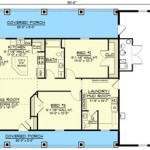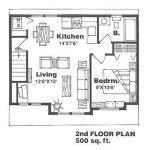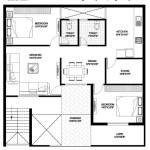Build My Own Home Plans
Building a home is a significant milestone that requires careful planning and execution. Creating your own house plans adds an extra layer of customization and control to the process, allowing you to tailor your dream home to your unique specifications. This guide will walk you through the steps involved in drafting your own home plans, empowering you to create a space that truly reflects your vision.
Step 1: Define Your Needs and Preferences
Before putting pen to paper, take the time to clearly outline your needs and preferences. Consider the size of your household, your lifestyle, and the specific features you desire in your home. Determine the number of bedrooms, bathrooms, living areas, and any special spaces (e.g., home office, guest suite, etc.) you require. Think about the architectural style, layout, and overall aesthetic that appeals to you.
Step 2: Gather Inspiration
Immerse yourself in various house plans and architectural styles to gather inspiration. Visit model homes, browse online galleries, and study magazines and websites dedicated to home design. Pay attention to floor plans, exterior elevations, and interior layouts that resonate with you. Create a scrapbook or digital collection of ideas and inspiration that you can refer to later.
Step 3: Choose Your Software
Numerous software programs are available to assist you in drafting your own home plans. Choose software that aligns with your skill level and the complexity of your design. Consider free options like SketchUp or Sweet Home 3D for basic plans or invest in paid software like AutoCAD Architecture or Chief Architect for professional-grade results.
Step 4: Start Sketching
Begin by sketching out rough ideas for your floor plan. Consider the flow of traffic, the placement of windows and doors, and the overall arrangement of rooms. Use graph paper or a digital drawing tool to create a to-scale plan, ensuring that the dimensions are accurate. Don't hesitate to experiment with different layouts and configurations until you find one that suits your needs.
Step 5: Refine Your Design
Once you have a basic floor plan, it's time to refine your design. Add details such as walls, doors, windows, and built-in features. Consider the placement of furniture and appliances to ensure that your home is both functional and comfortable. Explore different materials and finishes to create your desired aesthetic.
Step 6: Create Elevations and Sections
In addition to the floor plan, you will need to create elevations (views of the exterior walls) and sections (cross-sectional views of the house) to fully define your home's design. These drawings will help you visualize the exterior appearance and interior structure of your home.
Step 7: Seek Professional Input
While it's possible to design your own home plans, it's highly recommended to seek input from a qualified architect or draftsperson. They can provide valuable guidance, ensure structural integrity, and help you navigate building codes and regulations. Their expertise can save you time, money, and potential headaches in the long run.
Conclusion
Building your own home plans is a rewarding endeavor that allows you to create a space that perfectly reflects your vision. By following the steps outlined in this article, you can gain the knowledge and confidence to design a home that meets your needs, enhances your lifestyle, and brings joy to your everyday life.

House Plans And Design

House Plans And Design

I Like The Layout Of This House If Have Opportunity To Build My Own Home Is How Want It Be Bed Deck Double Garage Floor Plans

10 Best Tools To Help You Design Your Custom Built House Quality Homes Since 1958

House Plans How To Build A Home Step 3 Armchair Builder Blog Renovate Repair Your Own Save Money As An Owner

Palmer 7851 2439 Sq Ft House Floor Plans Build My Own

House Plans

Build My Own Plan Adelaide Rendition Homes

Atobe Construction Company

Pin By Joanna Howard Williams On Home Design And Decor New House Plans Build My Own








